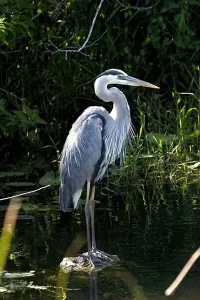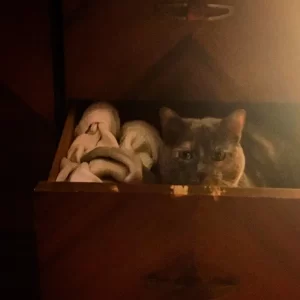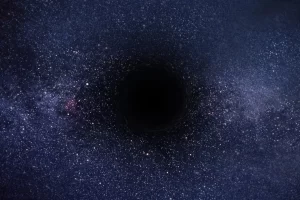 Patience is like a welcome mat to the gateways of life. We have moments in which different karmic streams seem to converge. Equally frustrating is their opposite, when nothing seems to move at all. Yet while the clash of life’s dynamic forces can be opportunities for chaos, they can also yield great clarity depending on how well we hold our seat and open our awareness. The key is to have the confidence to remain on our seat until clarity dawns. That is patience.
Patience is like a welcome mat to the gateways of life. We have moments in which different karmic streams seem to converge. Equally frustrating is their opposite, when nothing seems to move at all. Yet while the clash of life’s dynamic forces can be opportunities for chaos, they can also yield great clarity depending on how well we hold our seat and open our awareness. The key is to have the confidence to remain on our seat until clarity dawns. That is patience.
A heron waits in the reeds of a lake, silent and unmoving. She may be looking for food, or predators. She may be looking for nothing at all. But she is not hurried. Waiting is an essential part of nature’s survival game. Interesting. The key to survival in nature is not panic. And while quick defensive action is sometimes necessary, it must come at the right moment, when there is actual danger. Human consciousness, by virtue of its large processing ability, can out-maneuver and out-strategize predators. Unfortunately, this processing power comes at a cost. We are not always clear on what constitutes actual danger. Compared with other forms of carbon on the planet, we are relatively young in our development. It is as though we were thrust headlong into the maelstrom of survival. And despite our esteemable intelligence, we have not had the evolutionary time to develop the practical wisdom to differentiate actual danger from our imagined anxiety. For this reason humans are in a state of perpetual anxiety and unclarity. LIke the mythical ouroboros, the being that eats its own tail, our unclarity feeds our anxiety, which feeds our panic and locks us further away from clarity. As important as our survival is, our fear of death only instigates behaviors that hasten the very thing.
The key is that when we feel the need to act, if we are acting out of anxiety caused panic, we are jumping blindly into the maelstrom. But jumping blindly is wildly random, with a low percentage of a safe landing. One of the erroneous ways humans create the feeling of safety is to employ the same patterns of behaviour, in the same situations, again and again. For all our intellect reacting habitually to danger – especially when we’re not sure if its danger at all – is a very poor survival strategy. But should we not jump off our seat, this moment of fear can be seen as a gateway. We can choose the same unseen panic reactions because habit feels like safety, or we can pause and wait until we are free of the momentum of panic. Then we might act spontaneously and creatively to the natural changes in our life.
The spontaneous response is dependent on our being able to pause and assess before we act. In meditation parlance we call this allowing the gap. That moment of pause allows us to stop and see. It affords a moment to regain our balance. In this way, we have the opportunity to act mindfully rather than react blindly. That is the idea of the welcome mat to our new opportunity. Patience is a place to wipe our feet before we go in, tracking our negative karmic footprints all over our fresh start.
 In his Dharma Art teachings, Trunga, Rinpoche referred to the principle of “square one” as the idea of interrupting the momentum of our karmic streams. We come back to square one and begin fresh. These interruptions are anathema to ego, as egoic mind thrives on blind momentul. When we’re on a roll every interruption feels like a great annoyance. Likewise, when we are panicked and fighting for survival, we are driven to act and we hate the idea of waiting. And fairly, sometimes we don’t have a lot of time to wait, but we always have a moment to stop, breathe and return to the present. This reboot may be all we need to resynchronize and act from wakefulness. To those well-trained in meditation, patience might be a moment to breathe and reboot. But the training might require months of rest and learning to wait. Whatever it takes to begin to learn to give ourselves a break and get off our own backs. Pema calls this “learning to stay.” Sakyong Mipham refers to this as taking your seat and ruling your world. The patient monarch has created the space to see all the options available. Patience is the mat on that ground. Patience is the landing point.
In his Dharma Art teachings, Trunga, Rinpoche referred to the principle of “square one” as the idea of interrupting the momentum of our karmic streams. We come back to square one and begin fresh. These interruptions are anathema to ego, as egoic mind thrives on blind momentul. When we’re on a roll every interruption feels like a great annoyance. Likewise, when we are panicked and fighting for survival, we are driven to act and we hate the idea of waiting. And fairly, sometimes we don’t have a lot of time to wait, but we always have a moment to stop, breathe and return to the present. This reboot may be all we need to resynchronize and act from wakefulness. To those well-trained in meditation, patience might be a moment to breathe and reboot. But the training might require months of rest and learning to wait. Whatever it takes to begin to learn to give ourselves a break and get off our own backs. Pema calls this “learning to stay.” Sakyong Mipham refers to this as taking your seat and ruling your world. The patient monarch has created the space to see all the options available. Patience is the mat on that ground. Patience is the landing point.
Patience is not resignation. It is not grin and bear it as though we were stoically subduing our feelings until a storm passed. It is waiting until the ego pressure subsides in order to see the next right move. In this sense rather than grin and bear it we might say, “smile and bare it” as we cheer up and drop the artifice. Patience is remaining open to what is happening without interjecting ourselves. Patience is not shutting down. Patience is opening by allowing what needs to happen to organically arise. After years of aestheticism, activism and extreme yogiic training, the Buddha finally sat. He left the cities, the universities, the temples behind and sat beneath a tree in nature. Upon his awakening, Buddha attracted beings of the 6 realms. An old person stopped and asked who he was. With no need for a name, a designation, or a title he simply looked to her and said “I am awakened”. Skeptical, she asked “How do you know? Who can verify this?” He placed his hand on the ground.
“The earth is my witness”, he said.

The natural things of life need no shingles, credentials or diplomas. THe natural things just are, and as such, connects effortlessly to the life that surrounds it. Natural things are interdependent with all of nature. Our meditation can be like that. Natura and interdependent with all of nature. The mind our meditation uncovers can also be natural and connected to all of nature. Natural mind is the point. Natural mind happens as we develop the patience to be as we are.
Whether she is feeding, resting or about to flee, the heron is not motivated by anxiety, guilt or shame. Free of self-doubt, she waits silently until the moment she doesn’t. She is taking her seat like a warrior connected to all the life around her.
How do we know? The earth is her witness.


 DOUBT
DOUBT  I’ve been planning on writing this post for years. Recently, my notes have been
I’ve been planning on writing this post for years. Recently, my notes have been 
